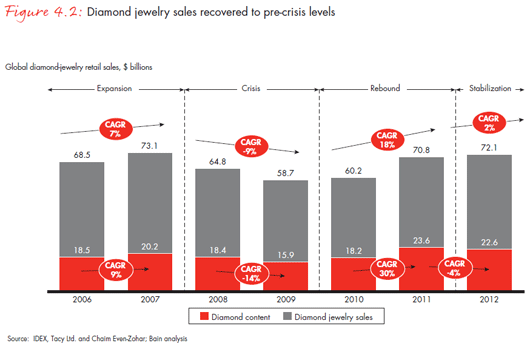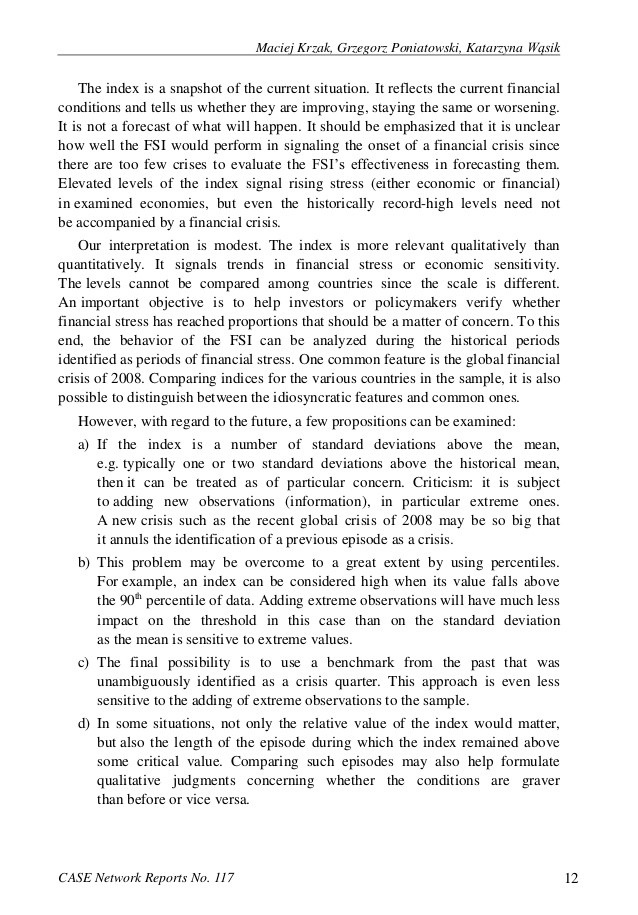Measuring Economic Uncertainty And Its Use In Identifying Market Trends
Post on: 20 Май, 2015 No Comment

Summary
- Economic uncertainty is a significant factor in financial markets.
- This can be measured (through Uncertainty Indices), and is a useful indicator of future economic conditions.
- Uncertainty Index values support a likely scenario of continued stability in the U.S. economy, sustained growth in the equity markets, and rising key benchmark interest rates.
Uncertainty Matters
Uncertainty is a broadly recognized influence on economic activity. The relationship between uncertainty and economic welfare has been well documented in economic literature, and recent research has demonstrated a strong correlation between reduced levels of investment and higher levels of uncertainty. Increased uncertainty is known to cause consumers and firms to pare back spending and will drive capital towards less risky investments (i.e. gold, US Treasury Bonds). Former Fed Chair Ben Bernanke authored several papers on the topic, advancing the notion that uncertainty restricts the current rate of investment by increasing the value of waiting for new information.
Though well understood theoretically, the notion of uncertainty has been, in practice, more difficult to measure and quantify, and subsequently less useful to those in the financial industry. We have developed an innovative way of quantifying uncertainty by using a multi-dimensional textual analysis approach that is more rigorous than popular techniques such as sentiment analysis (classifying text as positive, neutral, or negative). We believe that in order to capture the human dynamic in the financial domain, nuanced and sophisticated discourse analysis is needed to handle the intricacies of language. Using advanced text analytic methods, we have developed two primary indices shown to be useful indicators of future market conditions:
- S&P 500 Uncertainty Index (SP500 UI): Measures changes in uncertainty across the broader U.S. companies.
- Federal Reserve Uncertainty Index (FED UI): Measures uncertainty as expressed by Federal Reserve statements and testimony.

Relationship between the Uncertainty Indices and Interest Rates, Gold Prices, and the Stock Markets
Running correlations between values of these two indices over time against historical economic data provides a way of evaluating the effectiveness of the uncertainty measurement (backcasting). If the indices are a true measure of uncertainty, then there should be a relationship between uncertainty and several key economic metrics, such as specific benchmark interest rates, gold prices, and possibly the equity markets. The premise is that increasing levels of uncertainty expressed by corporations would be an earlier indicator of an economic downturn and future weakness in the equity markets. Additionally, growing economic uncertainty will drive capital into safer investments, thereby increasing the price of gold and Treasury Bonds (and lowering yields).
In order to evaluate this relationship, regression analysis was performed between the SP500 UI and the major stock indices, the 5-Year Treasury Bond, the 10-Year Treasury Bond, and gold. The analysis was completed using data going back to 2006, which captured the most recent, significant financial correction in 2008. The resultant R values for the key benchmark interest rates and gold were above 0.8, indicating a strong relationship (see charts below).
(click to enlarge)
(click to enlarge)
Correlation with the equity market indices (DOW, Nasdaq, S&P 500) was not as strong, at least given the time period and granularity of the data. However, it is important to note that the Uncertainty Index is clearly capturing the increase in market uncertainty leading up to the financial market collapse in 2008 and the political uncertainty of federal budgets and elections throughout 2012. Undoubtedly, economic uncertainty is just one of many factors affecting the state of financial markets. We make no claims that uncertainty alone is the primary factor driving the markets; however, it is clear from our analysis that a strong relationship exists between uncertainty and several key economic variables, a relationship that may be used as a predictive indicator of economic activity.
Most Recent Uncertainty Indices and What They are Telling Us
Uncertainty in economic conditions as expressed by the Federal Reserve and corporations continued to decrease during the fourth quarter of 2014, reflecting continued confidence (and lower perceived risk) in future economic conditions.
Specifically, economic uncertainty as disclosed by Federal Reserve documents decreased by 3.27% as compared to the previous quarter (FED UI). Over the 4th quarter, the Federal Reserve statements noted modest-to-moderate economic growth across all twelve regions, similar to what had been seen over the previous quarter. Employment continued to expand, and price pressures remain subdued. Overall, the narrative indicated a cautious optimism with regards to future business conditions.
Uncertainty as expressed by companies in the S&P 500 decreased by 0.14% relative to the previous quarter. The S&P Uncertainty Index (SP500 UI) drop continues a trend of lower uncertainty starting back in the second half of 2013. This downward trend indicates that corporations across a broad swath of the S&P 500 continue to convey a sustained confidence and certainty in the underlying fundamentals of the economy.
The Uncertainty Index values (SP500 UI and FED UI) are consistent and support a likely scenario of continued stability in the U.S. economy, sustained growth in the equity markets, and rising key benchmark interest rates.
Disclosure: The author has no positions in any stocks mentioned, and no plans to initiate any positions within the next 72 hours. (More. ) The author wrote this article themselves, and it expresses their own opinions. The author is not receiving compensation for it. The author has no business relationship with any company whose stock is mentioned in this article.














